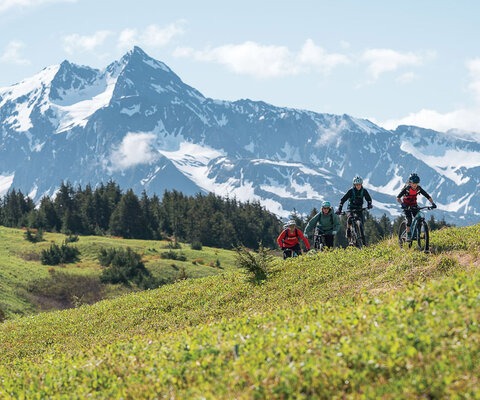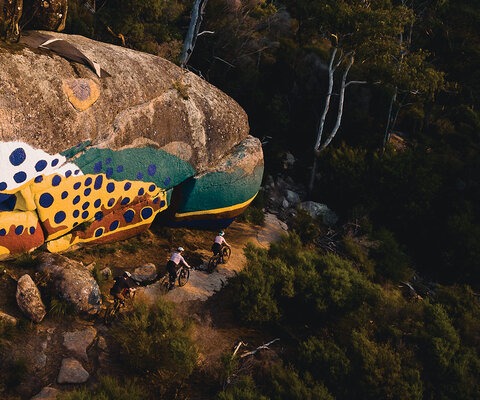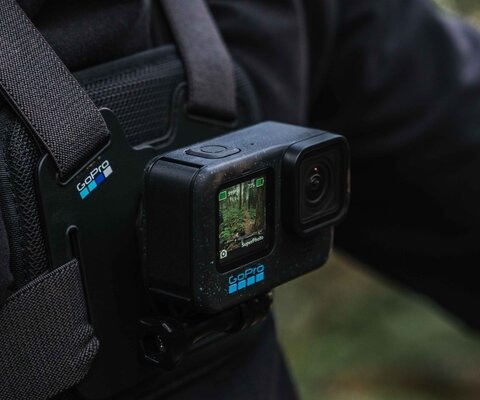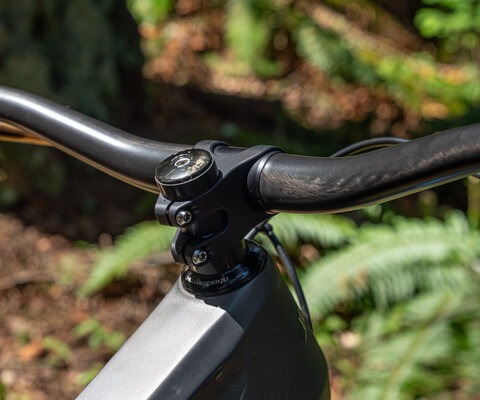
Riding the Frozen Pacific
Every weekend, a great migration occurs.
Without looking up, without hearing the wing beats of a thousand sandhill cranes breaking through the wind with slender, swift flight, it is still possible to sense this migration all around us. Like so many other residents in so many other Alaskan towns and beyond, I make the familiar migration each weekend. It always begins with the question:
“What should we do this weekend?”
It’s followed by the typical response: “Did you check the weather?” Then a quick check of avalanche forecasts, Doppler patterns and precipitation predictions.
And then, regardless of the answer to the question, following action ensues: a mad dash to grab the necessary applicable gear, from waterproof clothing to modes of transportation: bikes, skis, skates or snow machines. We pile everything into the back of the pickup and whisk ourselves away into the hinterlands for some weekend adventure.
Even in the darkest months of the year when it’s well below zero and the sun hardly breaks the horizon, folks in Anchorage like to be outside. Fortunately for us, just beyond our doorstep lies a vast, beautiful and rugged landscape, ripe for adventure and freedom.
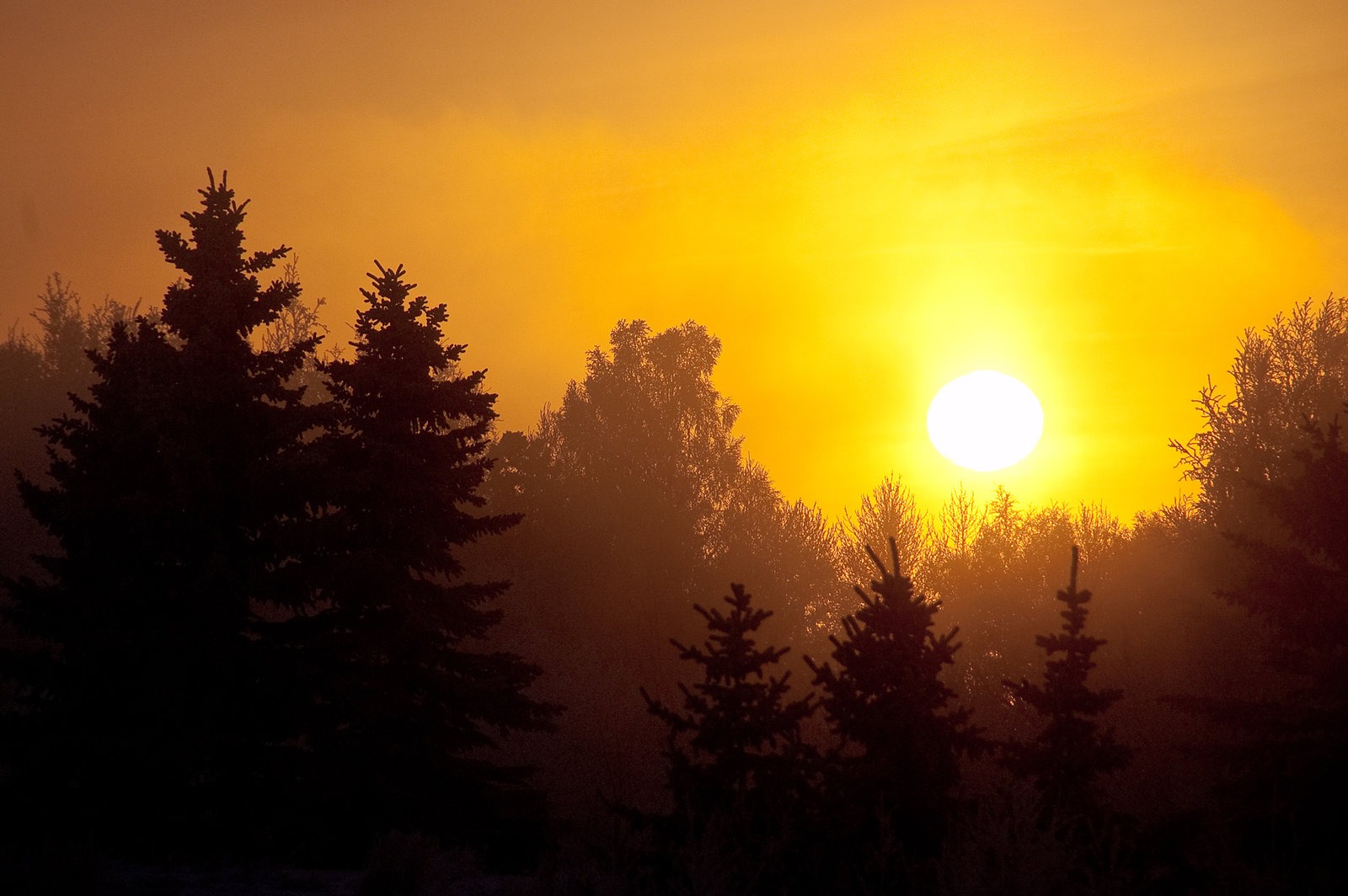
It was mid-January when we decided to interrupt our far-flung migrations for the experiences nearby offered. Two weeks of temperatures barely reaching zero degrees, no snow and foggy mornings left little inspiration to head to the mountains. A thick layer of ice hung from the trees and buildings of town, and veneered the local trails.
The answer to this weekend’s question? Ride bikes.
Three of us decided on the coastal mudflats of the Pacific at the edge of town. We’d start from the Rabbit Creek Rifle Range across from Potter Marsh at the southern end of the Anchorage Coastal Wildlife Refuge, and pedal the scenic mudflats to Point Woronzof Park. Then we’d loop back to our house in Valley of the Moon Park on the coastal trail, riding more than 24 miles in all.
We began just before low tide on trails within the wildlife refuge. Ironically, gunfire echoed behind us from the range. The birch and alder forest quickly opened up to icy mudflats. Weeks of freezing weather had made a smooth, solid sheet of the flats. Like biking on marble, we crossed a mosaic of yellow, brown, blue and white beneath our studded tires. The early morning was silenced by a blanket of fog.
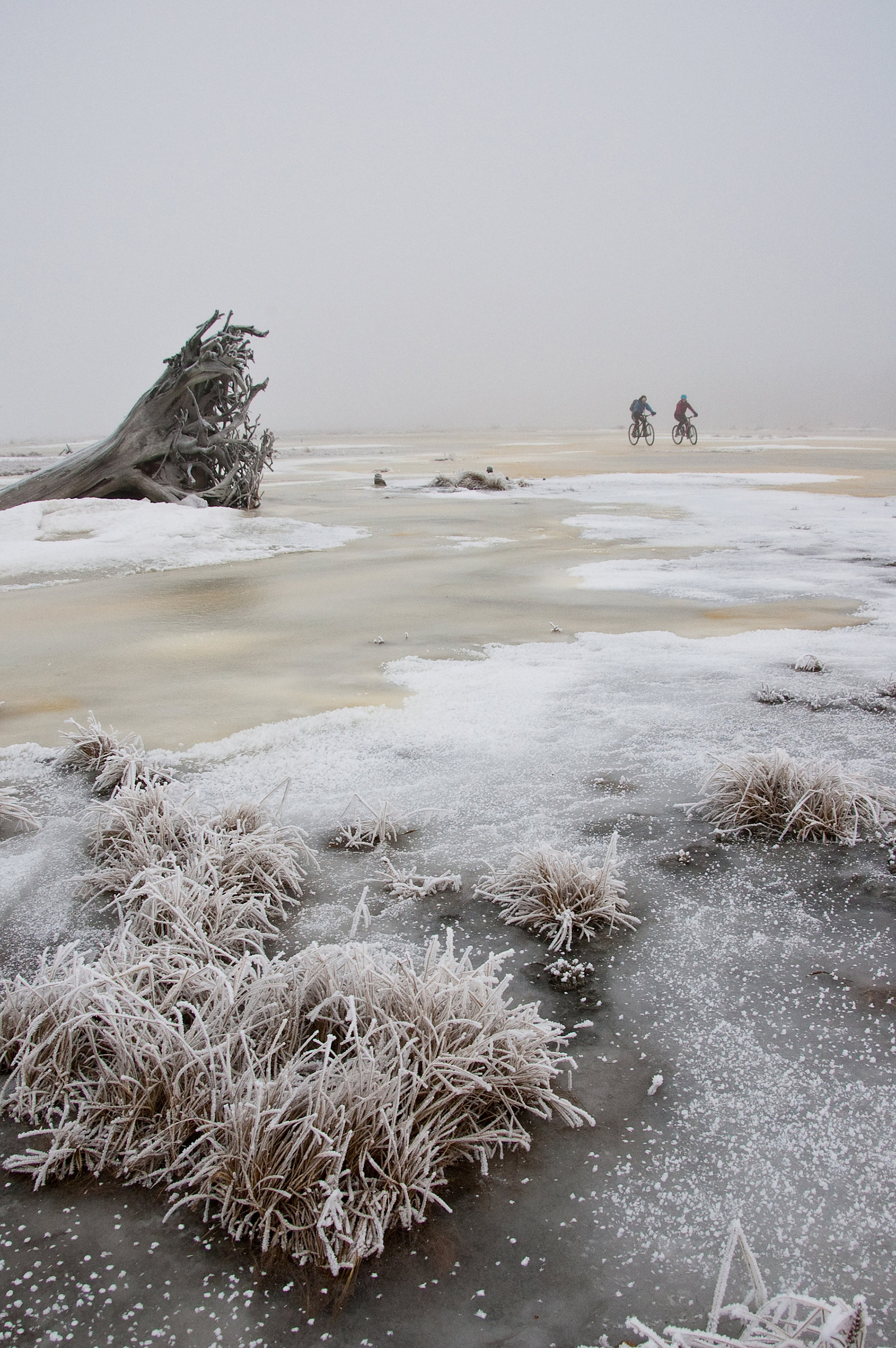
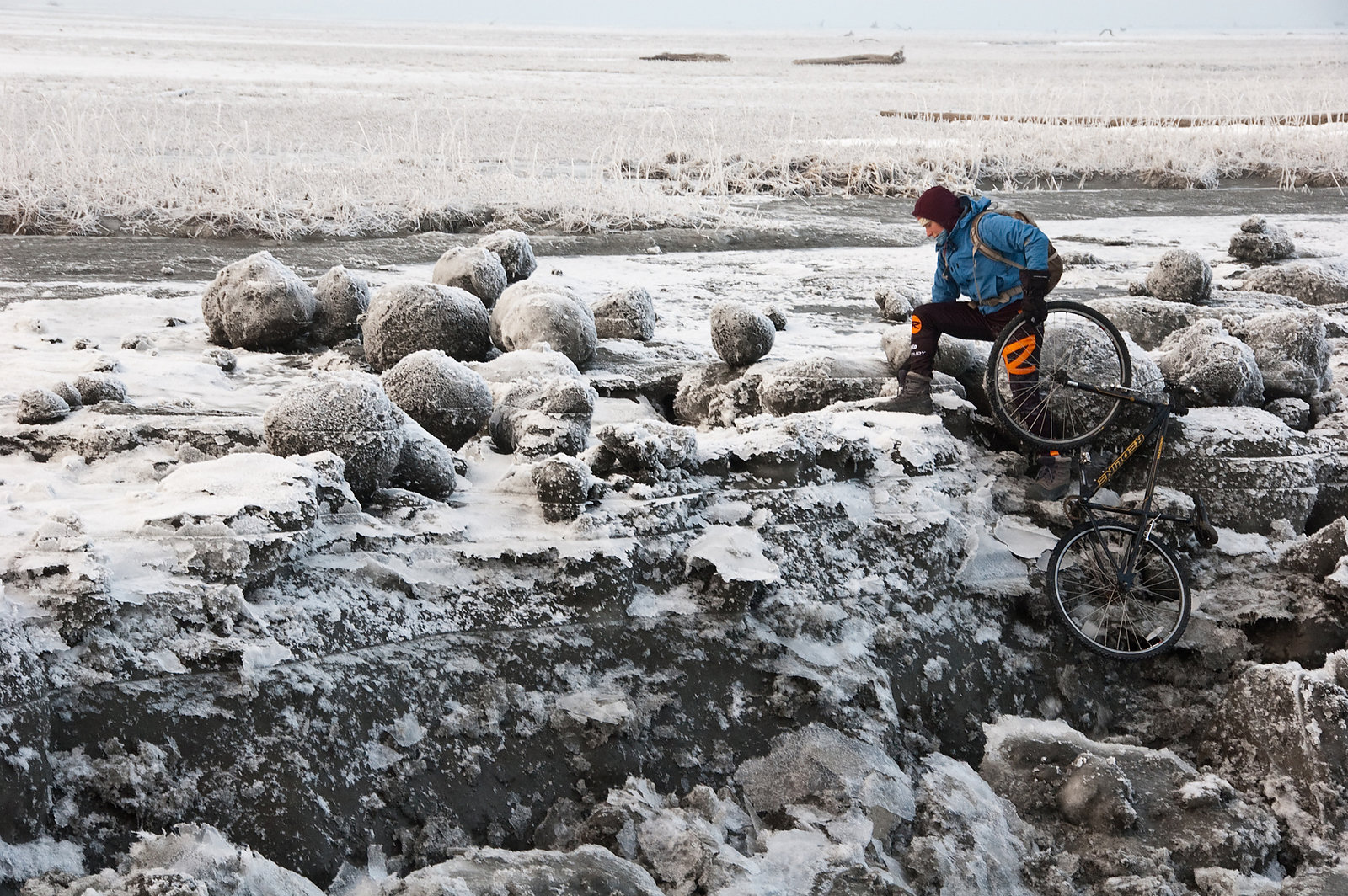
As we reached the first of three drainage crossings, the ice separated into layers, thinner on top. Now, the sounds of crackling accompanied our ride, and we left a jagged trail in our wake.
As close as we were to downtown Anchorage, we were alone on our adventure. Sort of. As we neared the bluffs of Kincaid Beach, a coyote ran west across the mudflats toward Fire Island. Then another came trotting across the ice in front of us. With the backdrop of low light and gray mist, it seemed these two fellow travelers would disappear over the edge of the earth.
It was about this time that we came to the largest of the drainage crossings: Campbell Creek. The drainage was a series of icebergs bobbing in pools of ice-crusted water. We flung our bikes over our shoulders, and proceeded to hop from iceberg to iceberg. Or two of us did. I however, possibly still lost in coyote wonder, quickly jumped across two icebergs, slipped off the third, and plummeted a leg into the ice water before flopping onto the fourth iceberg.
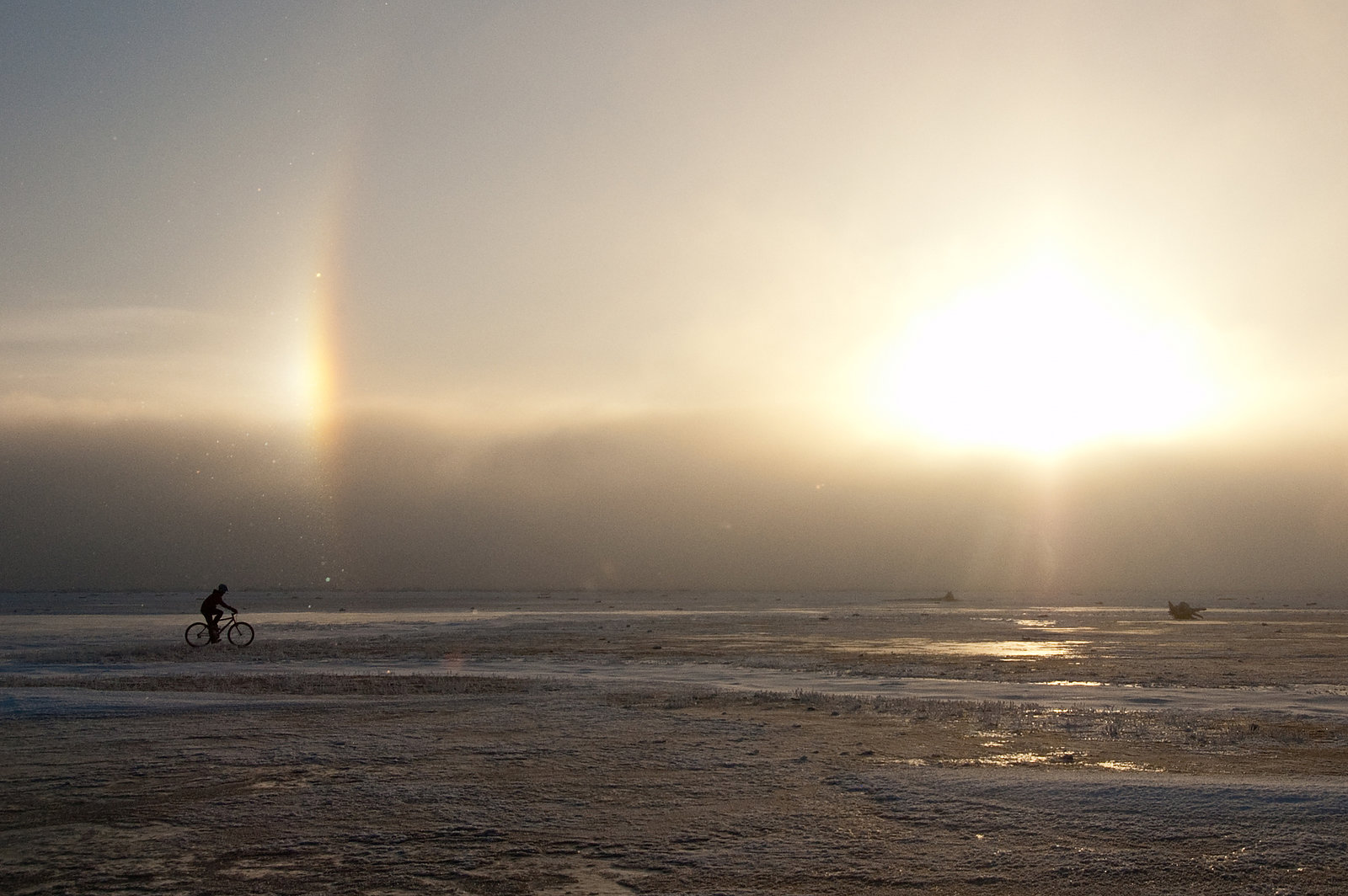
...The lower half of my right leg was completely soaked, and immediately began to freeze....
I took off my boot, wrung out my sock, and instead of returning my foot to the boot, the inside of which was already an icy mass, I wrapped it in a spare sweater and a rain jacket. Keeping the hardy-northerner reputation alive, I commenced to bike for the next two hours with a right leg resembling a MacGyver project gone awry.
Of course, biking became significantly more challenging without a shoe, but the icy path was smooth in most places, allowing for little resistance and easy pedaling. The fog gave way to brief winter sunshine, and we felt a hint of warmth on our faces. A sundog formed on the horizon, and we could briefly make out the Alaska Range to the north, providing a striking backdrop for the remainder of our ride.
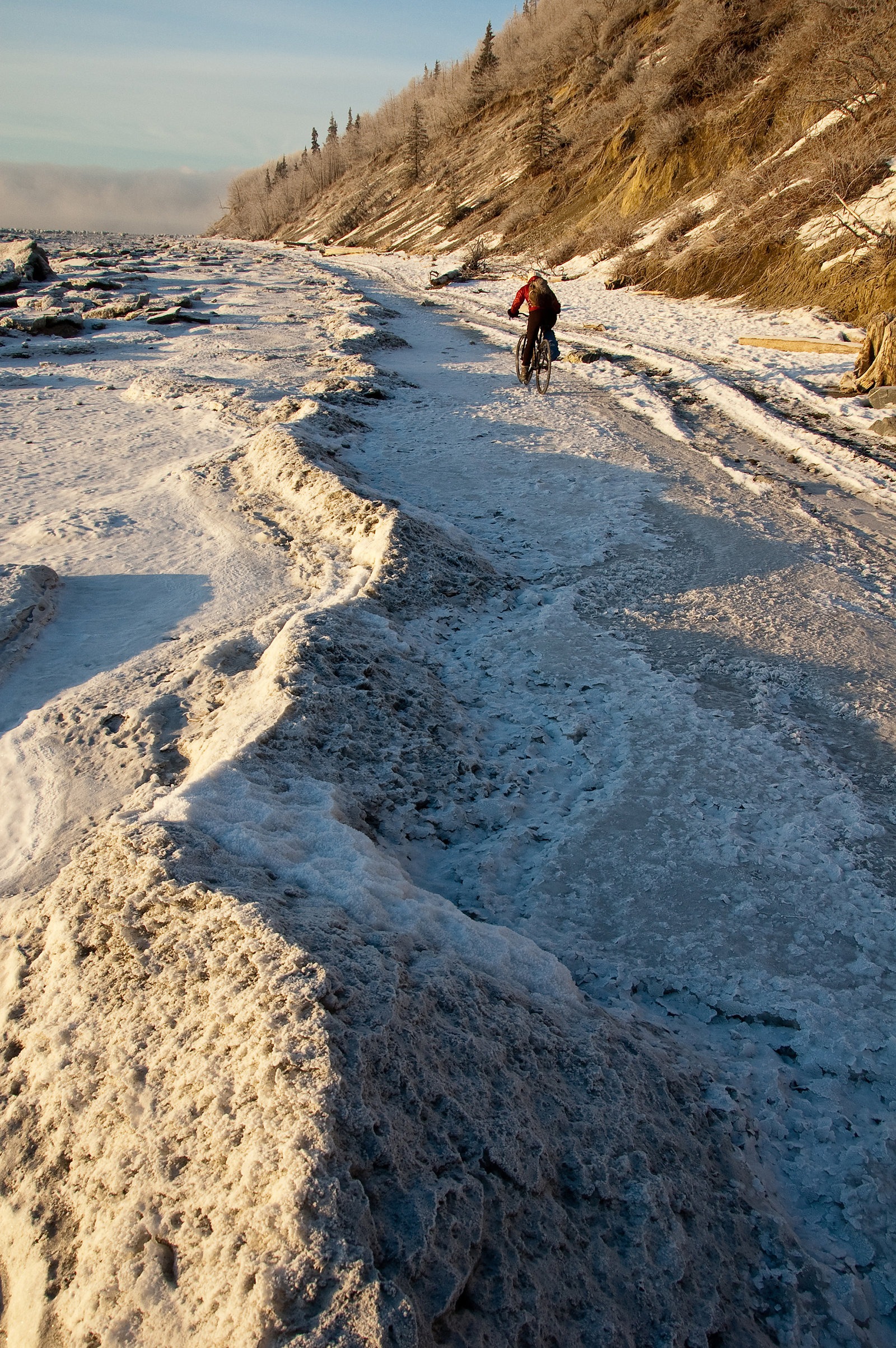

By the time we reached Point Woronzof, we were tired and hungry, but didn’t want to break the spell of biking on the otherworldly mudflats. We paused for a moment to watch the sun’s descent behind Lady Susitna, the mountain looming in the west, then turned toward town and began the journey home along the coastal trail to Valley of the Moon.
I read in a book once about “tethered nomadism,” the human tendency to travel between familiar locations over and over, traversing the same trails, roads and mountains as if we are each programmed with our own migration patterns. Our day on the mudflats allowed us to break that cycle, to diverge a bit from our typical migration routes and experience a completely new world full of adventure in an unlikely locale: our own front yard.

